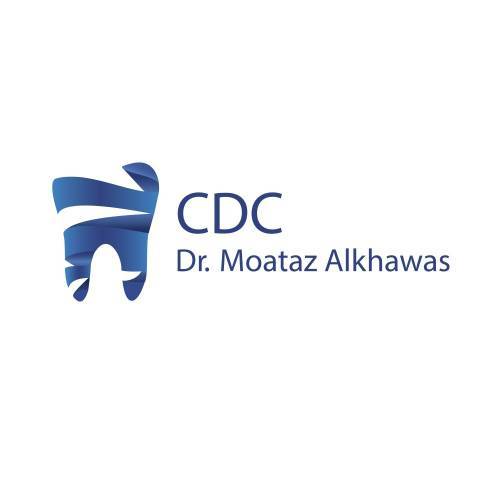
Mohamed Ahmed Hamed

Introduction
The ultimate goal for root canal treatment of teeth is to remove
bacteria and microorganisms from the root canal and to obtain a
debrided and disinfected canal space and make it able to be filled
efficiently(1). In order to achieve this purpose, endodontic files are used
to prepare the root canal, remove pulp tissue and debris, and ensures
easy delivery of the irrigants and medicaments to the apical third which
usually has a complex anatomy(2). Because of this complexity, it was
found that depending on endodontic instruments only to completely
debride the root canal is insufficient(3,4)
. Here comes the need to
introduce chemical irrigants inside the root canal to dissolve pulp
tissues and remnants, clean inaccessible areas untouched by the
instruments and prevent debris resulting from the friction between
endodontic files and root canal walls to accumulate at the apex causing
re-infection(5)
. Sodium hypochlorite (NaOCl) has been considered the
gold standard amongst different irrigation solutions due to its potent
antimicrobial action, as well as its ability to dissolve organic substances
and inactivate bacterial endotoxins(6)
.
Root canal debridement using conventional syringe irrigation
(CSI) has a limited efficacy in canal disinfection especially in the apical
region as the flow of the irrigants is limited and unable to penetrate
canal irregularities such as lateral canals and apical deltas(7). In order to
enhance the action of the irrigation solutions in canal debridement,
many activation techniques were introduced to enhance the efficacy of
the irrigating solutions such as manual dynamic activation (MDA),
sonic activation, laser activated irrigation (LAI), apical negative
pressure activation and passive ultrasonic irrigation (PUI). PUI is
2
considered one of the most popular techniques amongst the different
activation techniques(8,9)
.
PUI is a non-cutting irrigation protocol that relies on the
transmission of acoustic energy from a smooth wire or an oscillating
file that stirs the irrigating solution in the main root canal driving it to
remote untouched areas(10). This irrigation technique induces two
physical phenomena: acoustic streaming and cavitation of the irrigating
solution which creates bubbles in the liquid and when these bubbles
collapse near the canal walls, they create strong shockwaves and
powerful irrigant jets increasing the applied shear stress and improving
the cleaning efficiency of the irrigant(11). Moreover, part of the kinetic
energy of the ultrasonic file is transformed into heat leading to a
temperature rise of the irrigant in the canal that furtherly enhances its
antimicrobial role(12)
.
Very little research has been done to evaluate to which extent the
canal should be enlarged without unneeded removal of dentinal
structures and weakening the root or this goal can be achieved with a
smaller apical preparation size with the aid of irrigant activation
technique.
The ultimate goal for root canal treatment of teeth is to remove
bacteria and microorganisms from the root canal and to obtain a
debrided and disinfected canal space and make it able to be filled
efficiently(1). In order to achieve this purpose, endodontic files are used
to prepare the root canal, remove pulp tissue and debris, and ensures
easy delivery of the irrigants and medicaments to the apical third which
usually has a complex anatomy(2). Because of this complexity, it was
found that depending on endodontic instruments only to completely
debride the root canal is insufficient(3,4)
. Here comes the need to
introduce chemical irrigants inside the root canal to dissolve pulp
tissues and remnants, clean inaccessible areas untouched by the
instruments and prevent debris resulting from the friction between
endodontic files and root canal walls to accumulate at the apex causing
re-infection(5)
. Sodium hypochlorite (NaOCl) has been considered the
gold standard amongst different irrigation solutions due to its potent
antimicrobial action, as well as its ability to dissolve organic substances
and inactivate bacterial endotoxins(6)
.
Root canal debridement using conventional syringe irrigation
(CSI) has a limited efficacy in canal disinfection especially in the apical
region as the flow of the irrigants is limited and unable to penetrate
canal irregularities such as lateral canals and apical deltas(7). In order to
enhance the action of the irrigation solutions in canal debridement,
many activation techniques were introduced to enhance the efficacy of
the irrigating solutions such as manual dynamic activation (MDA),
sonic activation, laser activated irrigation (LAI), apical negative
pressure activation and passive ultrasonic irrigation (PUI). PUI is
2
considered one of the most popular techniques amongst the different
activation techniques(8,9)
.
PUI is a non-cutting irrigation protocol that relies on the
transmission of acoustic energy from a smooth wire or an oscillating
file that stirs the irrigating solution in the main root canal driving it to
remote untouched areas(10). This irrigation technique induces two
physical phenomena: acoustic streaming and cavitation of the irrigating
solution which creates bubbles in the liquid and when these bubbles
collapse near the canal walls, they create strong shockwaves and
powerful irrigant jets increasing the applied shear stress and improving
the cleaning efficiency of the irrigant(11). Moreover, part of the kinetic
energy of the ultrasonic file is transformed into heat leading to a
temperature rise of the irrigant in the canal that furtherly enhances its
antimicrobial role(12)
.
Very little research has been done to evaluate to which extent the
canal should be enlarged without unneeded removal of dentinal
structures and weakening the root or this goal can be achieved with a
smaller apical preparation size with the aid of irrigant activation
technique.
Copyright © 2020 Dr. Moataz Alkhawas All rights reserved

